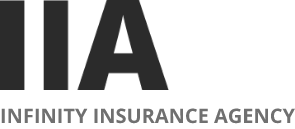While it is always important to have auto insurance, one of the best ways to protect your most precious cargo is to choose the correct child car seat and use it the correct way every time. What’s more, every U.S. state requires that an infant or small child be restrained when riding in a car. Your child’s age, height, and weight determine which type of seat he needs to ensure his safety.
Here are a few important guidelines* for properly restraining your child:
Rear-facing Car Seat - Until the age of two or until your baby reaches the highest rear-facing weight or height allowed by the car seat manufacturer, all infants and toddlers should be restrained using a rear-facing car seat. The seat should always be placed in the back seat. This advice includes the first ride home from the hospital with your bundle of joy.
Forward-Facing Car Seat - Children 2 years and older, or those who have outgrown the rear-facing weight or height limits for their car seat, should be placed in a forward-facing car seat. This car seat should contain a harness and be used without fail. It should still be placed in the backseat of your vehicle.
Booster Seat - Once a child is above the forward-facing limit for weight or height for their car seat, they should use a belt-positioning booster seat in the backseat until the vehicle lap and shoulder belt fit properly, which is typically between 8 and 12 years old.
Seat Belt - When the vehicle seat belt fits your child properly, they should use the vehicle lap and shoulder belt. Typically, the vehicle’s seat belt can be used on children when they reach a height of 4 feet 9 inches tall. Your child should still remain in the back seat until he or she is 13 years old.
Other Child Car Seat Safety Tips:
If your infant slouches in the car seat, place a small blanket or diaper between the infant and crotch strap. Be careful not to place any padding behind or under the baby.
When shopping for car seats, keep in mind that there isn’t really one model that is the safest or the best. And the most expensive car seat isn’t necessarily the best either. A car seat that fits your child properly, is installed correctly, and is used relentlessly every time you drive with your child in the car, is the best car seat for you.
Avoid using a car seat that has been recalled. To find out if a car seat has been recalled, you can call the manufacturer or contact NHTSA at 888-327-4236. Alternatively, head over to SaferCar.gov and search for a specific car seat recall.
When purchasing a brand new car seat, make sure you fill out the registration card right away. This extremely important step will help you keep current and register you for prompt notifications in the event that your car seat has been recalled.
Always read the car seat’s manufacturer instructions. Learn how to properly install the car seat and how to use the latch or equipped seat belt. Make a point of knowing the weight and height limits just in case they vary for your specific car seat. If you don’t have the car seat’s instructions, the manufacturer’s name, and phone number should be listed on the car seat’s label. You can call their customer service number to have the instructions sent to you. Some car seat companies have the instructions on their website.
To have your car seat inspected by a certified technician near you and learn how to properly install your car seat, use the NHTSA car seat inspection station locator.
